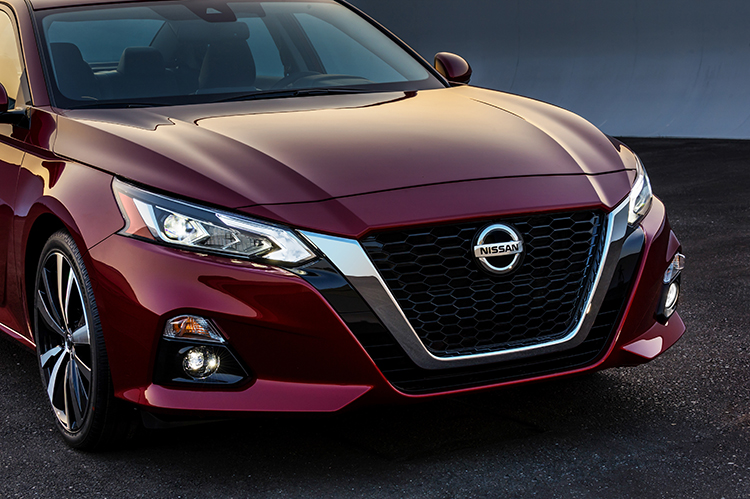
2019 Altima – the new global face of Nissan Sedan design
Once the dominant body style in most major automotive markets, sedans sales have experienced erosion in favor of consumers’ preference for crossovers and compact SUVs. That has left the leading global sedan manufacturers in a unique position of competing not only with each other, but within their own model lineups for sales.
“When we originally started designing the next generation of the Altima, it was still the company’s best-selling nameplate in the critical U.S. market, so there wasn’t much pressure to make radical changes,” explained Alfonso Albaisa, senior vice president, Global Design, Nissan Motor Co., Ltd. “Then our own Rogue took off, drawing in new customers unlike anything we’d experienced before. This gave us the opportunity to rethink the Altima outside the traditional sedan design box and create something more exciting and yet more sophisticated.”
Thus, deep into the usual design cycle, teams from four major Nissan design centers – Japan, Europe, U.S. and China – were called together to start working on a compressed timeline to create a new global face for Nissan sedans. Simultaneously, in a nearby studio work was well underway for the stunning Nissan Vmotion 2.0 concept, which became the blueprint for the new Altima.
“The usual sequence for a concept car and production model is to have a little more breathing room between the two so you can gauge public reaction. But with the Altima the schedule was compressed to the benefit of both vehicles through an ongoing exchange of ideas,” said Albaisa.
The other unique aspect of the new Altima design process was driven by the decision to make this generation more of a global vehicle, rather than just U.S.-focused.
Working side by side, the Nissan designers from each market influenced the others, resulting in a design appealing to global customers looking for sophistication, expressivity and sport.
Expressive design for empowered owners
Given the freedom to go bold and go quickly, the designers faced another challenge. In a changing marketplace for midlevel-priced vehicles, who represented the core, loyal sedan buyer? The answer came down to two words – professional and sophisticated.
“Our studies clearly identified a large group of people who choose sedans over crossovers because they see sedans as more efficient in terms of space and energy – and as vehicles that work equally well with clients as with carpools,” said Albaisa. “We pictured empowered people who want everything in their lives – from homes to offices to fashion to cars – to be functional yet stylish every single day. The all-new Altima is exactly that.”
With this key target consumer mindset in place, a couple of other timely decision fell into the designers’ laptops. First, the corporate decision to make the Altima a true showcase for the most advanced Nissan Intelligent Mobility technology – as well as the major investment in two new engines. And secondly, the decision to give the Altima a new lower, longer, wider platform.
Those two decisions alone enabled a number of critical design choices, starting with the new Altima’s proportions and stance. The lower-profile engines – both the new VC-Turbo and the new 2.5-liter 4-cylinder – gave the designers the freedom and space to lower the new Altima’s cowl and hoodline – which also resulted in a lower instrument panel height and a more open-feeling cabin.
With the more compact engines, not only could the hood be lower but the front overhang could also be shortened. At the same time, the rear wheels could be pushed farther to the corners, helping create the sleek, sporty profile. At the same time, the designers opened up the wheel wells of the longer, wider body and fitted up to 19-inch wheels and tires – creating the sporty stance, like a track athlete getting ready to run.






